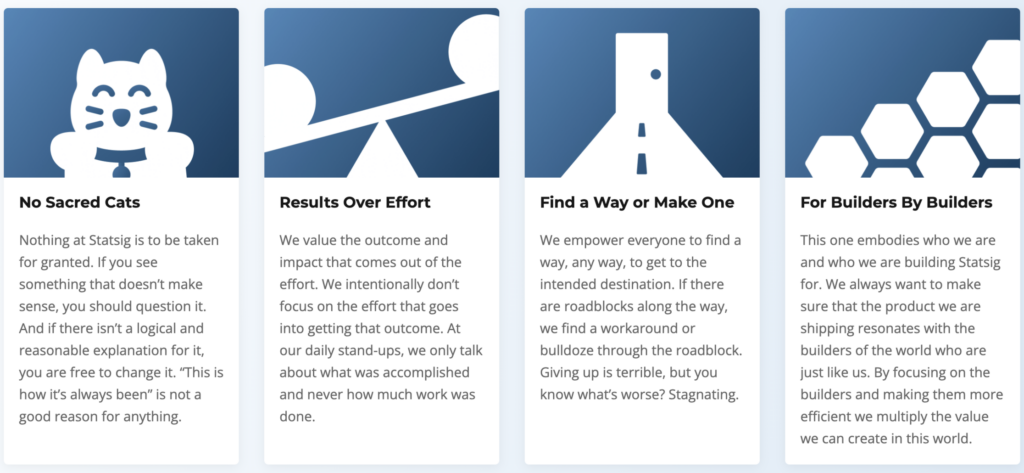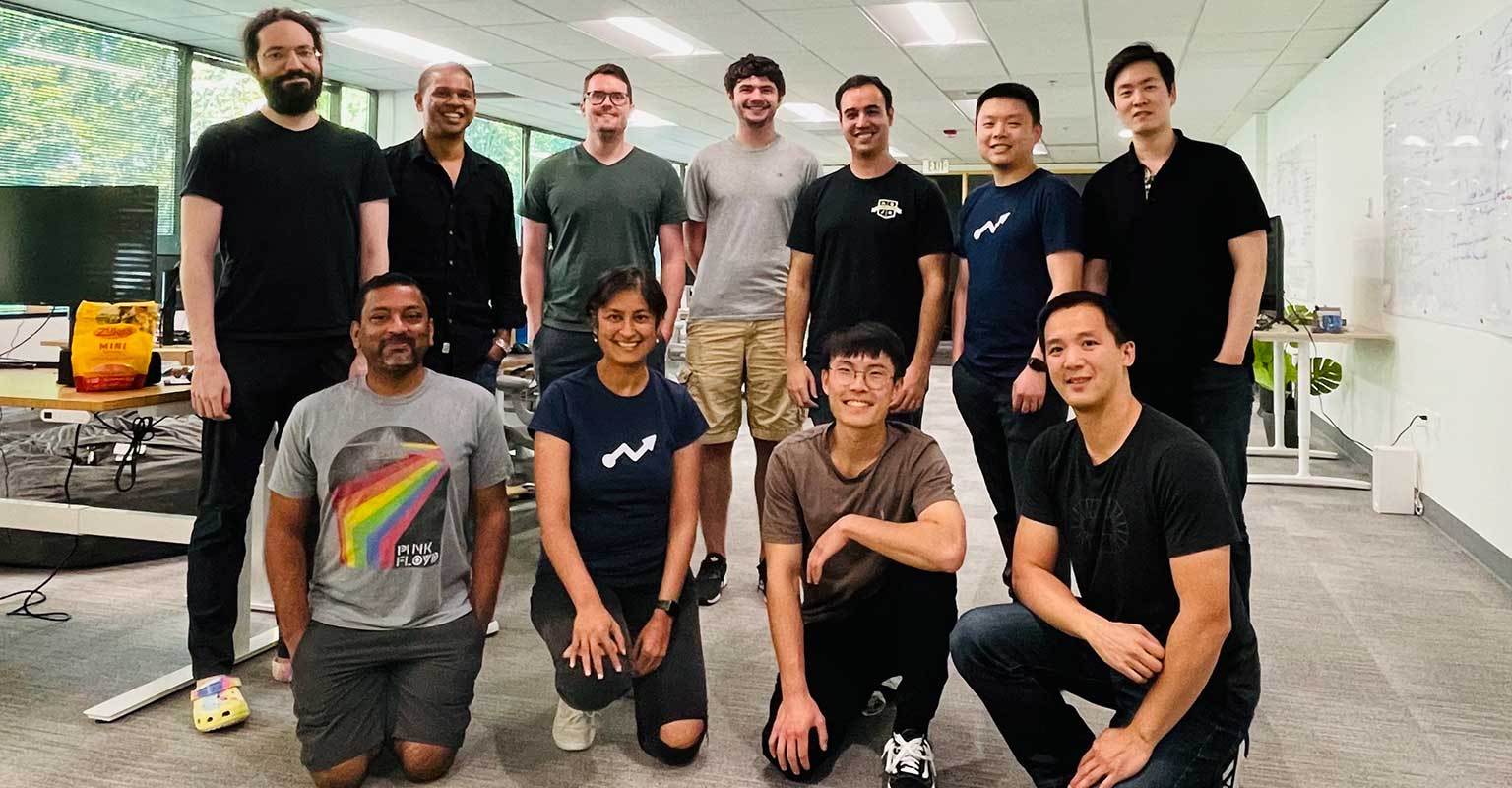
With the right formula, teams can achieve engineering excellence, but it requires thoughtful intention and commitment. Enter Statsig, a modern experimentation platform whose observability platform empowers teams toward excellence by increasing their experimentation velocity by 10x. Statsig empowers any user, regardless of expertise, to understand the true impact of new features and make decisions quickly. But it starts from within. Statsig’s own developer velocity is next level, and Madrona has had great confidence in the team and their work from the beginning, investing in both the Series A and B rounds.
According to a 2020 McKinsey study, various factors impact developer velocity, including creating the right environment for developers to innovate and removing friction points. The study pinpoints tools, product management, culture, and talent management as having the most significant impact on developer velocity, which in turn improves business performance.
Statsig brought on Head of Product Anu Sharma in July 2021, shortly after the company secured its Series A, and she attributes her team’s developer velocity, and in turn, the company’s success, to three elements that serve as the team’s foundation: a focus on culture and values, consistently delighting the customer, and building for scale.
Culture and Values Matter
Statsig recognizes and rewards impact over effort in everything they do — from the ideas they pursue to the challenges they overcome. The Statsig culture is one where the combination of respect for all ideas, continuous improvement, and customer obsession all converge, empowering the team to quickly experiment, test, and iterate to achieve the best results.
When teams live their values, they make decisions and consider tradeoffs with these values always in mind — even when it comes to recruitment. Statsig seeks out team members who share the same DNA.
“Moving fast isn’t codified as a cultural value — it’s in our DNA. We ship fast to get our ideas out in the wild and learn from real-world experience,” she explained. “Moving fast and iterating is part of every feature decision, prioritization discussion, and strategic evaluation at Statsig. Speed is like oxygen to us. To slow down is to stagnate and die.”
Cultural practices reinforce a company’s value system. Statsig cultivates its culture of transparency through daily, company-wide standup. It is a time for everyone to openly share individual tasks, receiving claps from the whole company when they’re successful.
“This offers a healthy, transparent forum for folks to introduce everyone in the company to their work and its impact,” Anu shared. “In doing so, this drives transparency across every function of the business.”
Delight the Customer
The Statsig team is not overly process driven, but one lightweight process they’ve embraced and is engrained in their culture is consistently delivering customer delight, which isn’t realized through speed alone but by ensuring the team is building the right products to begin with.
Over 80% of the new features Statsig delivers are in direct response to customer requests, many of which they ship in under two days.
Statsig pushes new software to production every day. They intentionally scope new features to release within one or two weeks, so the team can iterate quickly on customer feedback and add new capabilities incrementally within days. Similarly, they scope a significant new product experience to be available to beta customers in 3-4 weeks. They balance their ability to ship quick wins while shipping more substantial features at a regular cadence.
“When customers ask for a feature that we can build quickly, we don’t let it slide into a round of planning and prioritization. We jump on it immediately, and our customers love seeing their requests live in a couple of days,” Anu said. “When our ‘customer delight’ bucket drops to zero, we seek out opportunities to hold a steady stream.”
Statsig’s transparency is reflected in the product. Customers have visibility into user targeting, assignment, and experiment analytics on Statsig’s web console, ensuring they can easily verify how data is generated as they slice and dice the results to gain trustworthy insights. When the Statsig team learned that some customers wanted to pull in event data and precomputed metrics from their data warehouses, the team jumped on it quickly to ensure their customers were delighted.
“While we offered programmatic options to pull data into Statsig from multiple sources — via web APIs and data collectors such as Segment and Rudderstack — we didn’t offer a way for customers to simply plug their data warehouse datasets into Statsig,” Anu said.
The company started working on it right away. It launched a beta within four weeks for select customers and opened it for general availability a couple weeks later, introducing integrations with five top data warehouses within six weeks of starting.
Build for scale
Scalability is impacted not only by the systems, design, and infrastructure a company has but also by its teams and processes. Bringing new developers into the fold is a necessary journey for teams in pursuit of growth. But onboarding new team members can sometimes bog down an agile team because learning and ramp time require efforts of more senior team members. Statsig ensures new developers can ramp as fast as possible, with an accelerated, hands-on process that allows new developers to quickly grow into strong contributors. They start new engineers with well-scoped projects, allowing them to learn from peers in engineering, product, and design about customer pain points their work will directly address. By developing and opening new features to internal dogfooding using Statsig’s own feature gates, new hires learn to use the product itself while addressing feedback from the team.
“New engineers learn by doing.” Anu said, adding that there is a great deal of product understanding and insight gleaned through the extensive use of the Statsig platform, where new developers “build new features, quickly discovering the rough edges, fixing bugs and gaps as they go, and joining product ideation within weeks. This makes our product planning and prioritization discussions short and straightforward, which further fuels our velocity. We don’t lose time debating new ideas — we build incrementally and iterate as we learn.”
On the technical side, some companies become constrained when they outgrow the workflows that worked well when the company was starting out. For companies operating on the cloud, this sometimes means they optimize for one of the main infrastructure environments. Statsig foresaw this and has focused on building containerization workflows, which can be deployed to any public cloud provider and allow for rapid iteration of deployment, easier engineer onboarding, and consistency across environments.
All too often, leaders default to more people as a solution to any problem, but that isn’t always the right answer. Through a combination of very strategic and tactical mechanisms, the Statsig team continues to achieve next-level outcomes for customers and team members alike. Statsig’s commitment and intention to culture, customers, and hiring has directly impacted developer velocity and company success.
Check out this full Q&A with Audra and Statsig Head of Product Anu Sharma for more on the company’s developer velocity.

